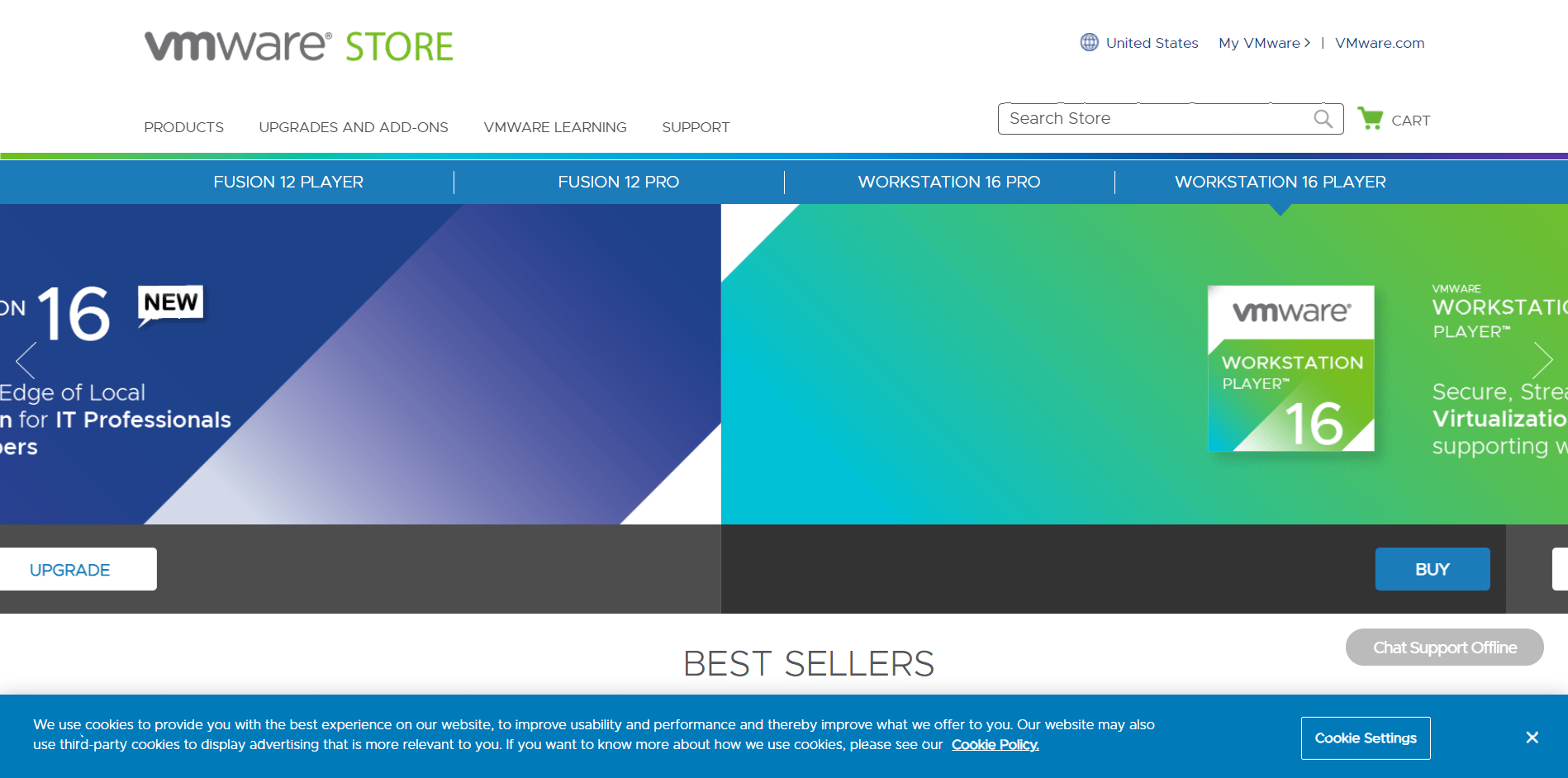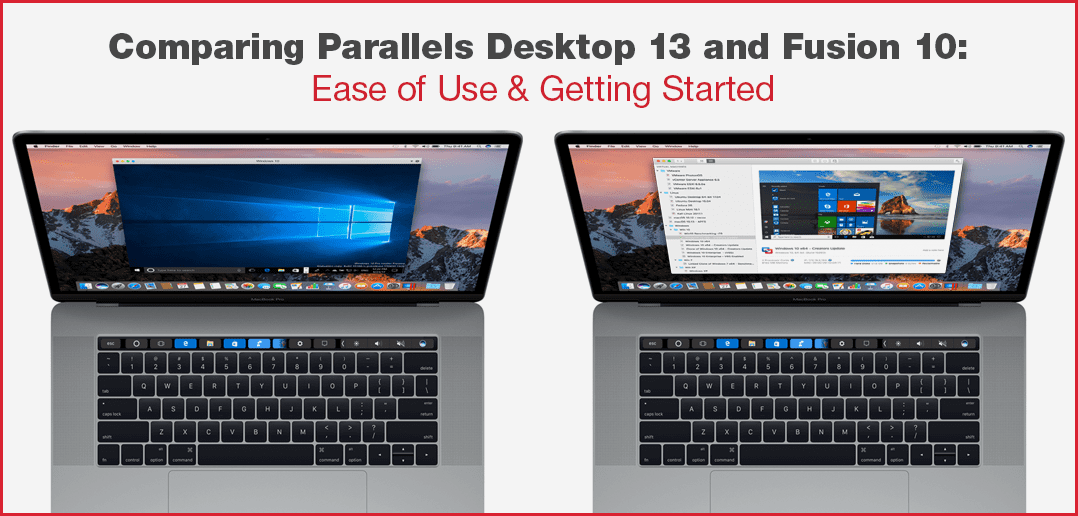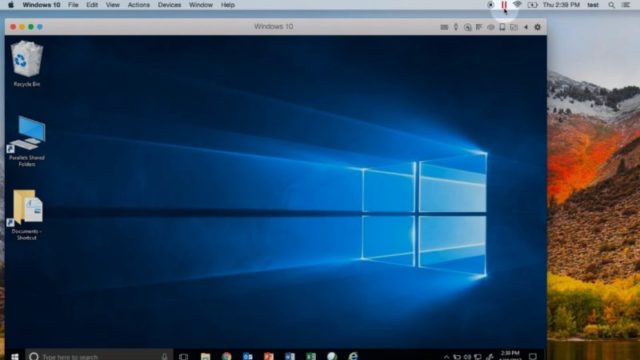
- #Parallels or vmware fusion for mac driver
- #Parallels or vmware fusion for mac upgrade
- #Parallels or vmware fusion for mac full
- #Parallels or vmware fusion for mac for windows 10
- #Parallels or vmware fusion for mac pro
Parallels, unlike VMware, offers a Chrome OS version that runs Intel-based Windows.įor gaming and graphics-intensive apps, both VMware Fusion and Parallels Desktop support DirectX 11 graphics, but not DirectX 12. VirtualBox, which is available for Intel-based Windows, macOS, and Linux machines, lets you create VMs that run Windows and Linux distros. macOS is the obvious exception since it is licensed for running only on Apple hardware. Any operating system that runs in VMware Fusion on a Mac can also run on VMware Workstation for Windows or Linux. Any VM you open gets listed in your VM Machine Library. You simply copy a VM from another machine or download one from any of the sites that provide VMware appliances (prebuilt special-purpose guest systems). You can't create VMs with this app but you can run existing ones.

If you know that you need to run an Intel-based version of Windows or another OS on your Mac, just hold on to your Intel-based Mac VMware Fusion and Parallels simply work better on those machines.įor most versions of Windows and Linux, VMware offers a VMware Workstation Player app that’s free for personal use. However, even this option isn’t seamless because Parallels can only run ARM-based operating systems you are thus limited to the ARM-based version of Windows (which is also available only as a developer preview). In the meantime, Parallels Desktop is currently the only practical virtualization choice for devices running the M1 or future Apple Silicon chips. That said, VMware recently announced a private tech preview of an M1-compatible version and an upcoming public preview. If you have a Mac running Apple Silicon, the current version of VMware Fusion won’t work on your machine.
#Parallels or vmware fusion for mac driver
Some of these unsupported systems rely on driver software created by individual programmers, but setup guides are easy to find online. If you are curious about ancient computer history, try out this complete Openstep system I put together.

Advanced users can run dozens of others systems that aren’t officially supported, such as IBM’s OS/2 or even Steve Jobs’ ancient NeXTSTEP and Openstep systems. Most Mac users will probably use VMware to run Windows-anything from Windows 95 to Windows 10-but you can also run macOS and older Intel-based OS X versions almost any Linux distro and Solaris, FreeBSD, or NetWare.
#Parallels or vmware fusion for mac for windows 10
Prepare to hand over $139 to Microsoft for Windows 10 Home or $199.99 for Windows 10 Pro. Keep in mind that whichever emulator you choose, you’ll need to purchase a license for Windows, if that's the OS you want to run on your Mac. Another is the new open-source UMT emulator which, if you’re willing to live with molasses-level speeds, lets you run ARM-based OSes on an Intel-based Mac or Intel-based operating systems on an Apple Silicon Mac. One free alternative is the open-source VirtualBox, but it’s slower and far clumsier than both Fusion and Parallels.

#Parallels or vmware fusion for mac pro
The Pro version adds customization features, unlocks a rollback mode that lets you experiment with system changes, and removes the restriction of 8GB of RAM and four emulated CPUs per machine. With the subscription model, you get new Parallels versions as soon as they arrive. I don't recommend you purchase the Standard edition, because it’s likely that the version you buy this year won’t work smoothly with future versions of macOS or let you emulate future versions of Linux and Windows systems. Parallels Desktop offers a limited Standard version for home and student users that costs a one-time fee of $79.99 as well as a subscription-based Pro edition for $99.99 per year. Subscription options (starting at $241 per year) are available for corporate users who need heavy-duty levels of support. Currently, upgrades to Version 12 from older versions of VMware Fusion respectively cost $79 and $99 for the Player and Pro editions.
#Parallels or vmware fusion for mac upgrade
You will need to pay a fee if you ever want to upgrade to a new whole-number version of VMware Fusion, however. VMware Fusion primarily functions as a traditional license-based app, meaning that you buy it once and own it forever. You also get the ability to encrypt or clone a VM. With this tier, you get network customization and simulation features, plus the option to connect to VMware’s vSphere cloud-based hypervisor tool. VMware Fusion Pro is slightly more expensive at $199. If you intend to use VMware Fusion Player for commercial use, a license costs $149.

The latter is free for personal or non-commercial use, which makes it the obvious first choice for users who don’t want to pay for virtualization software.
#Parallels or vmware fusion for mac full
Like Parallels Desktop, VMware Fusion comes in two versions: a full professional version (VMware Fusion 12 Pro) and a lightweight version (VMware Fusion Player).


 0 kommentar(er)
0 kommentar(er)
